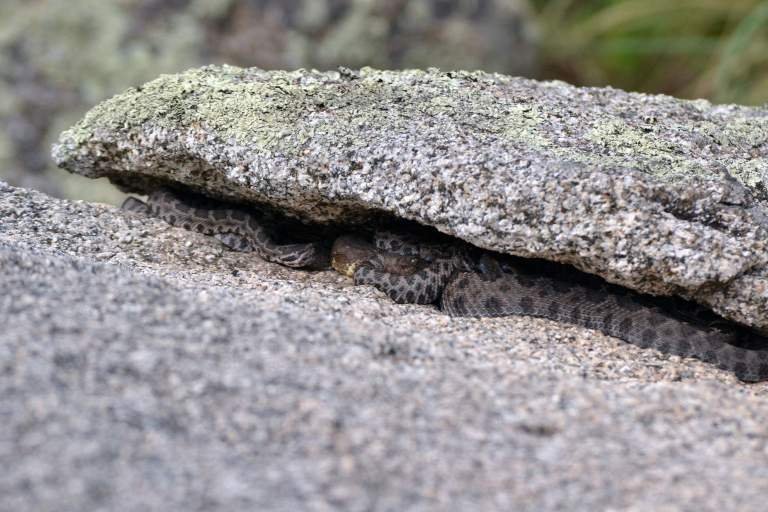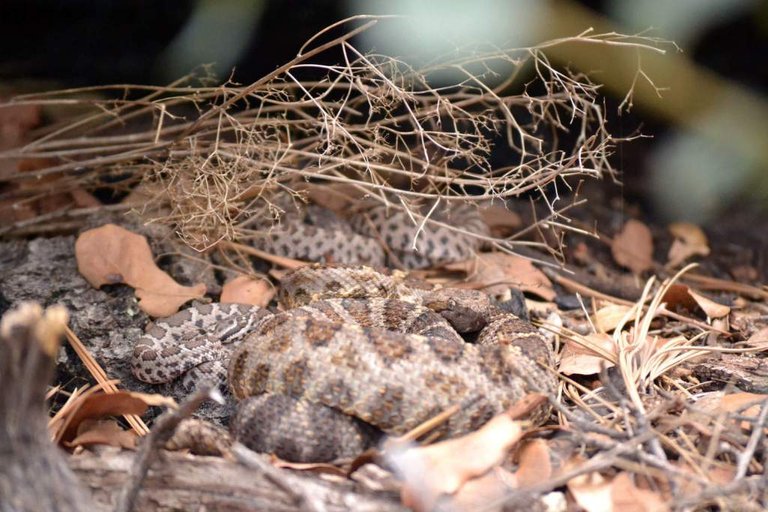Snakes garner quite a bit of fear and hatred from humans. They are one of the few animals that people will kill on sight simply because they don't like snakes or are afraid of them. Here on steemit, I have tried to increase understanding for these amazing animals while also explaining why killing snakes is just a bad idea (they're good for the environment, they're beneficial for humans, etc.), but there is one reason I haven't covered: a snake killed by humans might actually be missed.

Melissa Amarello is a founder of Advocates for Snake Preservation, an organization that seeks to improve the relationship between humans and snakes and foster a peaceful coexistence. She is a biologist who specializes in studying the social lives of snakes, a little understood aspect of their biology. In an interview with Animal Cognition (interview can be found here), Amarello shared her experiences studying Arizona black rattlesnakes (Crotalus cerberus) and the close ties they share with one another.
Amarello was drawn to these snakes when conducting an unrelated study for her graduate thesis. She was directed to a hibernaculum by her partner (this is a communal den shared by snakes to survive the winter); when she informed her professor about the snakes hanging out with one another, he strongly urged her to pursue a new project studying the relationships between the snakes. Many snakes that den together do so because the breed upon emerging in the spring; finding a mate is much easier when everyone groups together during winter. However, the Arizona black rattlesnake doesn't mate in spring, and because there is plenty of adequate den habitats to be found, these snakes aren't by any means forced to share a communal space. They seemed to be willingly choosing to spend their time together.

There has been documented evidence of parental care in well-studied rattlesnakes for decades; while many people assume these animals lay and abandon their eggs immediately, the truth is they actually provide a surprising level of care. When studying timber rattlesnakes (C. horridus), Amarello observed that juveniles and mature females tended to associate more with their own relatives than "strangers"in these communal dens and rookeries (gestation/birthing sites).
"For our research, we used proximity as our metric of association; if snakes were within a body length of each other (and thus could identify each other by scent and sight), we classified that as an association. While we did also record whether they were touching, we didn’t analyze at that scale (due to small sample size) or record any more specific behaviors." Amarello Source
When studying the Arizona blacks, she found that the baby snakes will seek out their mother's winter den (she never observed any at a different den) and will continue to associate the following spring. Upon hatching, mother rattlesnakes will care for their offspring closely for about a 1-2 week period. Because newborns are much smaller and not as keen on identifying danger, the mother remains in close proximity to protect them from predators. If they get to far away, she will herd them back together to continue her vigil. She will also act as a heat source when necessary; being much larger, her body will retain heat longer, and the babies will pile on to make use of this precious heat source. Amarello has even observed snakes that appear to be "babysitting" the offspring of other mothers, though she says further genetic testing would be required to determine their relationship and whether they are actually guarding the offspring or are just in close proximity.

Amarello has even observed what she calls "friendships" between snakes. Most association seems to take place during basking, when the snakes are in close proximity trying to acquire the heat and UV they require to maintain adequate health. They do seem to exhibit a preference towards basking with certain individuals. The video below is a time-lapse above a communal basking spot; the two snakes, "Spooky" and "Ali" have been observed together 57% of the time, making their bond/friendship one of the strongest observed by Amarello.
<iframe width="806" height="484" src="
frameborder="0" allow="autoplay; encrypted-media" allowfullscreen></iframe>Amarello hopes her research will go to strengthening the bond between humans and snakes. She believes that by pointing out how similar they are to us, we will understand and appreciate them as more than the ugly, dangerous monster we have made them out to be.
"Snakes are more like us than people realize. They learn. They care for their kids. They care for their neighbors’ kids. In some cases, they have families and friends they visit throughout their lives. They have homes with favorite places to get food, meet friends and mates, rest, and shelter from predators and inclement weather. Humans tend to otherize people and animals we perceive as different and treat them poorly. I hope that by helping people see that snakes share many behaviors with us, behaviors we value, people will choose to treat them better, and cruelty like wanton persecution of snakes and rattlesnake roundups will no longer be socially acceptable." -Amarello Source
Video Link: 1

hello snakes have always disgusted and creeped people ...
Always follow your post!
Very interesting and helpful.
Beautiful pics !
I have always been very fond of snakes. Thanks for sharing this information about snake relationships haha never really thought much about it before
I had no idea! I didn't even realize that snakes cared for their young, much less could have a fondness for other individuals.
I never knew about these types of relationships between snakes. I learned something new today! Thanks.
That's fantastic! It seems like the more science learns about animals, the more the image of them as stimulus/reaction machines is discarded.
Interesting research. I find snakes very sensitive creatures. We used to have an excellent reptile house near us (they took a lot of rescues from airports etc as well as breeding their own) that allowed you to handle the snakes. I was quite touched by the way the snake we were handling clearly knew and was most comfortable with the main handler - very clearly slithering back towards him. We don't usually associate such familiarity and interactions with snakes.